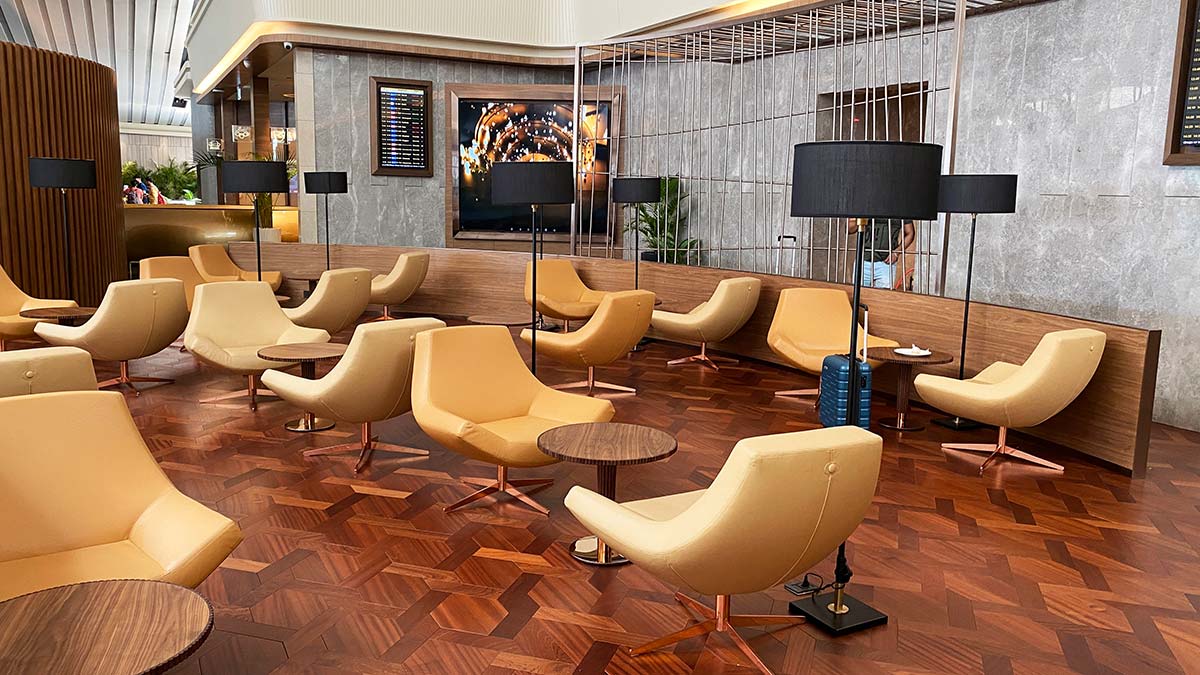My habit of arriving early at airports, coupled with an unexpected 30-minute flight delay, afforded me extra time at the 080 lounge in Bangalore Airport. After walking around and filling my plate up with some fruits and breakfast pastries, I chose a broad, rotating chair with a side table, facing another row of similar chairs. Behind me was a walkway leading to the restrooms, alongside which stood a makeshift kiosk promoting American Express credit cards.
Well over an hour passed as I ate, read, and worked on my computer. During this time, I became intrigued by the activities of two Amex salesmen at the kiosk. In the span of roughly 90 minutes, I estimated they approached or engaged with 30 to 40 passersby. Notably, I observed that these men did not approach a single woman about the Amex cards.
Initially, I may have not been fully attentive, but as a pattern emerged, I began to subtly monitor how these salesmen reacted to women walking by. The kiosk’s proximity to a frequently used walkway ensured a steady flow of both male and female passersby. It’s important to mention that the gender ratio in the lounge was approximately 2:1 in favor of men.
As time progressed, the pattern became more pronounced. Men, dressed in everything from business suits to casual wear, were consistently engaged by the salesmen. Each interaction was similar: a cordial greeting, a brief pitch/check-of-interest about the Amex card, followed by an attempt to engage in a longer conversation. Despite the diversity of the crowd, the salesmen’s approach seemed exclusively focused on potential male customers.
In contrast, women, comprising a significant portion of the lounge’s populace, mostly passed the kiosk without acknowledgment from the salesmen. This included women in professional attire, leisurely dressed tourists, and some in vibrant sarees.
This selective approach raised questions. Was it a deliberate strategy, possibly directed by higher management, or an unconscious bias in their sales tactics? The underlying reasons remained unclear, but the pattern was unmistakable.
One could speculate that in India’s predominantly patriarchal society, men might be perceived as more financially capable, thus more valuable to Amex. However, this overlooks several counterpoints. At the lounge entrance, I noticed independent women, traveling solo, accessing the lounge with their own cards, demonstrating financial independence. Inside, many women appeared to be unaccompanied, challenging the stereotype of women’s financial dependence.
In a cosmopolitan city like Bangalore, particularly in an airport lounge, the female demographic represents a blend of relative independence and financial stability. Ignoring one-third of the lounge’s members based on gender seems counterproductive.
If the salesmen had been constantly engaged, one could attribute this to an efficiency strategy, targeting the most likely prospects, which would still be a bias. However, there were periods, sometimes exceeding five minutes, where no active engagement occurred. Yet, they did not attempt to approach the women who walked by, as they did with men.
I want to note that my observation was during a relatively smaller window of time, of at most 90 minutes. This may not offer the entire picture, but it was long enough for me to notice this. The reason for this selective targeting remains unknown, but it highlights an intriguing aspect of marketing strategies and potential biases within them.
This observation at the 080 lounge offers a window into the subtleties of customer engagement and the potential biases that can influence marketing strategies. It underscores the importance of inclusive approaches in marketing, especially in diverse and cosmopolitan settings. By overlooking a significant portion of the potential customer base, businesses may miss out on valuable opportunities. This scenario serves as a reminder of the evolving nature of consumer demographics and the need for marketing strategies to adapt accordingly.
Going beyond missed opportunities, companies like Amex have the opportunity to be more inclusive with more sensitivity training to their customer-facing members. Out of the 15 men they tried to chat up, one or two stopped to chat for longer, even if this number is lower amongst women (unverified), the few they might potentially get as a customer would speak up and promote the brand to other women, acknowledging and owing to their lack of gender bias. I would imagine that many brands are treating women this way, which would make the brands that take the effort to eradicate this bias stand in high regard to essentially half the population of the world.
